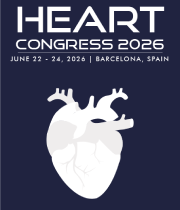Title : Investigating the therapeutic efficacy, safety, and long-term impact of sacubitril valsartan in treating hypertrophic cardiomyopathy
Abstract:
Background: This study aims to evaluate the efficacy, safety, and long-term effects of sacubitril/valsartan in treating hypertrophic cardiomyopathy using a hypertrophic cardiomyopathy rat model and in vitro cardiomyocytes. Hypertrophic cardiomyopathy presents a challenge in cardiac disease treatment. This research aims to explore the potential role of sacubitril/valsartan in treating hypertrophic cardiomyopathy, offering novel therapeutic strategies for this condition.
Methods and Materials: Experimental groups were established using a hypertrophic cardiomyopathy rat model (400±10g, n=9 per group), with the treatment group receiving sacubitril/valsartan and the control group receiving a placebo. In vitro cultured cardiomyocytes were exposed to different concentrations (0mg, 25mg, 50mg, 75mg, 100mg, 200mg, 500mg, and 750mg/kg/day) of sacubitril/valsartan. Measurements included myocardial hypertrophy, cardiac function indices, and cell assay data.
Results: The left and right myocardial hypertrophy index and myocardial cell diameter of the treatment group were lower than those of the control group, which were (1.04±0.21 vs 1.38±0.15), (0.34±0.08 vs 0.46±0.09), (15.23±1.67 vs 19.82±2.01) μm, respectively. The differences were statistically significant (P < 0.05). Echocardiography showed that the left ventricular end-diastolic diameter (LVEDD) and left ventricular end-systolic diameter (LVESD) in the treatment group were lower than those in the control group, which were (2.03±0.36 vs 4.26±0.54) mm and (1.74±0.83 vs 3.57±0.83) mm, respectively. The differences were statistically significant (P < 0.05). The levels of troponin, myocardial kinase isoenzyme and lactate dehydrogenase in the drug treated group were lower than those in the control group (234.56±31.24 vs 412.89±21.36) pg/ml, respectively. (67.98±10.56 vs 98.65±13.27) U/L, (124.78±31.24 vs 214.67±28.79) U/L, the differences were statistically significant (P < 0.05).
Conclusion: Sacubitril/valsartan exhibits promising therapeutic potential; however, further clinical studies are required to validate its exact efficacy in treating hypertrophic cardiomyopathy. These preliminary results offer hope for its potential as a treatment and provide a foundation for future clinical investigations.
ENTRESTO is available as film-coated tablets for oral administration, containing 24 mg of sacubitril and 26 mg of valsartan; 49 mg of sacubitril and 51 mg of valsartan; and 97 mg of sacubitril and 103 mg of valsartan.
Effect of ENTRESTO on Pharmacokinetics of Coad ministered Drugs
The mechanism of entresto for protecting the cardiomyocytes and preserving the heart function through regulating the oxidative stress



